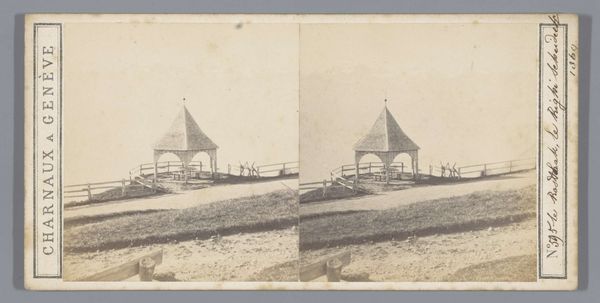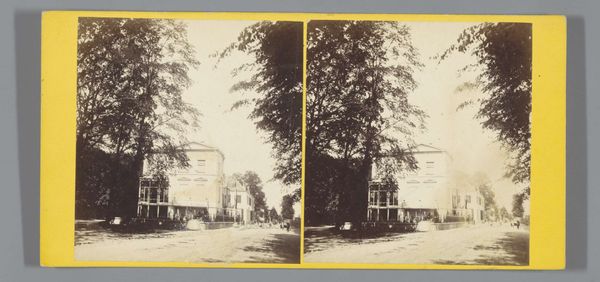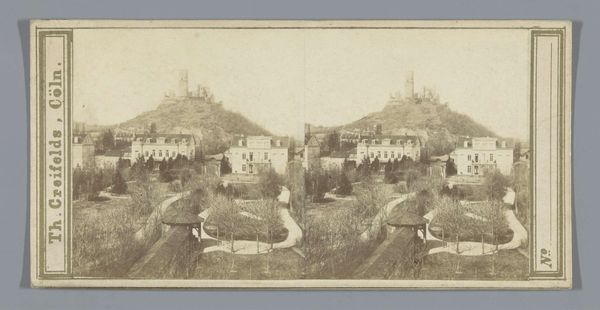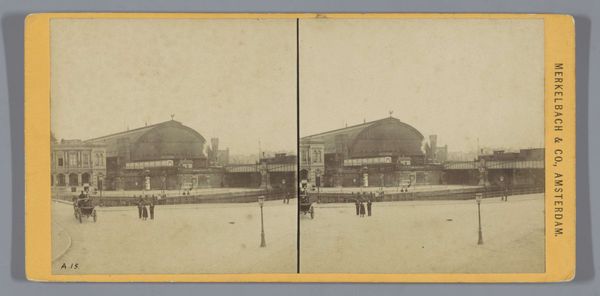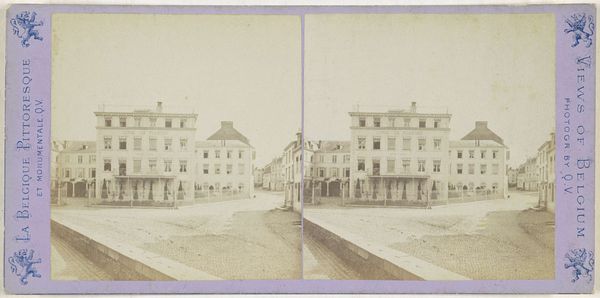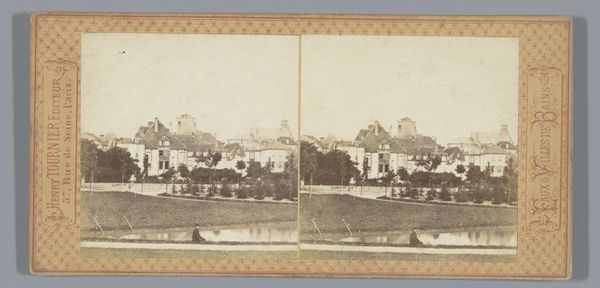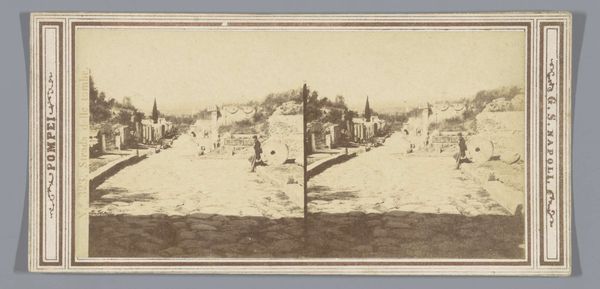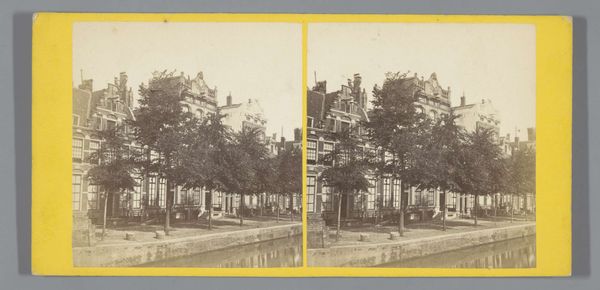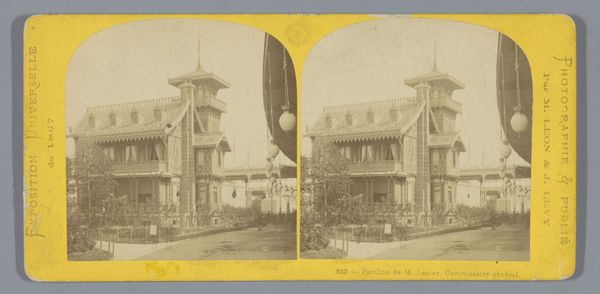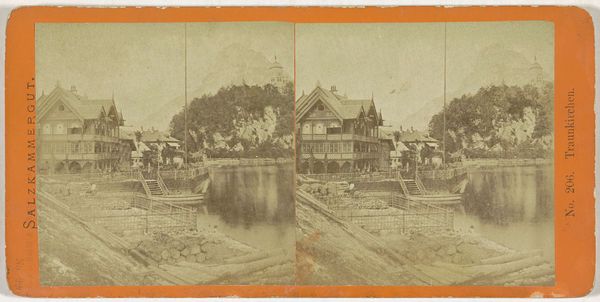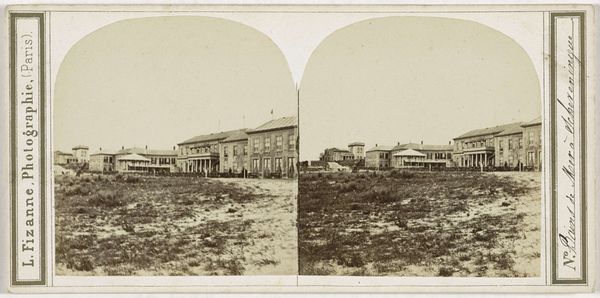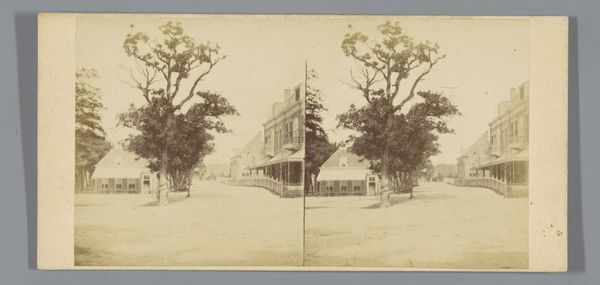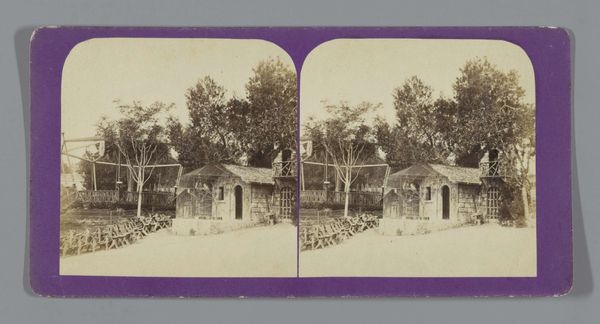
Dimensions: height 88 mm, width 175 mm
Copyright: Rijks Museum: Open Domain
This stereo card, or double photograph, shows a beach scene in Trouville-sur-Mer and was produced in Paris by Jean Andrieu. The image is a product of the wet collodion process, which was dominant at the time. A glass plate would have been coated with chemicals, exposed in the camera while wet, and then developed immediately. This painstaking, alchemical process was crucial to early photography. The image is softly blurred with sepia tones. The card format was intended to give a three-dimensional impression when viewed through a special device, which allowed for a sense of immersion and realism. The image also captures the emergence of leisure culture during this period. The tent and grand buildings signify a growing middle class with the means and desire to spend time at the beach. The clothing, the architecture, and the very act of documentation speak to a society in transition, where the boundaries of art, industry, and everyday life were being reshaped by labor, technology, and the burgeoning consumer economy.
Comments
No comments
Be the first to comment and join the conversation on the ultimate creative platform.
